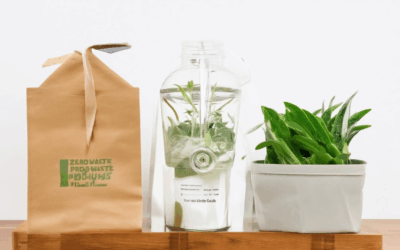As global demand for sustainable living continues to rise, so does the need for innovative strategies to enhance our homes’ energy efficiency. Sustainable home energy solutions are not just a trend—they’re a necessity for future generations and our planet’s well-being. Whether you’re looking to reduce your carbon footprint, lower energy bills, or simply create a healthier living environment, adopting sustainable practices can make a significant difference. However, navigating the complexities of green home energy systems and renewable resources can be overwhelming. That’s why this comprehensive guide is here to walk you through everything you need to know about sustainable home energy.
Key Takeaways
– Upgrade to Solar Heating Systems: Capture sunlight for radiant heating or hot water, reducing fossil fuel reliance and lowering energy costs.
– Geothermal Heat Pumps: Efficiently extract heat from the Earth, minimizing greenhouse gas emissions compared to traditional systems.
– Biomass Heating with Sustainable Sources: Burn organic materials like wood pellets to generate heat, cleaner than fossil fuels when using sustainably harvested wood.
– Electric Radiators and Heat Pumps: Offer clean, efficient heating with low energy waste, ideal for zones requiring precise warmth.
– Hydronic Heating Systems: Distribute heat via water pipes, compatible with renewable energy sources for a sustainable home setup.
– Maximize Energy Efficiency: Combine sustainable heating systems with insulation, high-efficiency windows, and smart thermostats for optimal performance.
- Stay Cozy with Layering: Trap body heat with multiple clothing layers for maximum warmth and comfort.
- Use Blankets Strategically: Opt for thick blankets or electric options to maintain warmth, especially during sleep.
- Seal Windows and Doors: Prevent heat loss by installing weatherstripping and closing curtains during cold days.
- Generate Heat Through Cooking: Utilize oven or stove heat to warm your home while preparing meals.
- Electronics for Warmth: Use space heaters or heating pads to target specific areas, ensuring safety.
- Stay Active and Warm: Engage in physical activities to generate body heat and boost metabolism.
- Eat Warm Meals: Consume nutrient-dense foods and hot beverages to maintain energy levels.
- Humidify for Comfort: Use a cool mist humidifier to prevent dry air and enhance warmth.
- Warm Showers for Relaxation: Enjoy water temperatures between 95°F and 100°F to improve circulation and comfort.
- Sleep Under Insulated Covers: Invest in high-quality bedding to retain body heat during rest.
- Infrared Heaters for Efficiency: Targeted heating that reduces energy waste and is easy to install.
- Wood-Burning Stoves Economically: Cost-effective with reliable heat, especially with locally sourced wood.
- Hydronic Radiant Systems: Even warmth distribution with potential for renewable energy integration.
- Electric Heating Solutions: Affordable installation but monitor peak usage for savings.
- Improve Insulation: Reduce heating costs by retaining heat in your home.
- Programmable Thermostats: Save energy by adjusting temperatures remotely, enhancing efficiency.
- Geothermal Heat Pumps: Long-term savings with high efficiency, despite initial investment.

What Are the Sustainable Energy Sources at Home?
Sustainable energy sources for homes offer an eco-friendly and cost-effective way to power your household. Here are some common options:
Solar Energy
- Photovoltaic Systems: Install solar panels on your roof to convert sunlight into electricity. These systems can significantly reduce your reliance on grid power and lower your energy costs.
- Thermal Systems: Use solar thermal panels to collect heat from the sun for water heating or space heating, further reducing your carbon footprint.
- Tips for Maximizing Solar Energy: Position panels facing south for maximum sunlight exposure and consider installing energy storage systems to save excess production for later use.
Wind Energy
- Small-Scale Wind Turbines: Install a miniwind turbine to generate electricity from moving air. These are ideal for properties with consistent wind conditions.
- Larger Wind Systems: For rural areas, larger wind turbines can provide enough energy to power an entire home or even sell excess energy back to the grid.
- Energy Storage Solutions: Pair wind systems with battery storage to ensure a steady supply of electricity during calm periods.
Geothermal Heat Pumps
- How It Works: Geothermal systems use the Earth’s stable underground temperature to heat and cool your home, reducing your reliance on fossil fuels.
- Benefits: Low maintenance and long-lasting, these systems can cut your energy costs by up to 50% compared to traditional HVAC systems.
Hydroelectric Power
- Micro-Hydro Systems: Install a hydroelectric system to generate electricity from flowing water, such as from a stream or pond on your property.
- Efficiency: These systems are highly efficient and can provide a significant portion of your home’s energy needs.
Bioenergy
- Biogas Digester: Convert organic waste into biogas using a digester system, which can be used to power your home or sold back to the grid.
- Waste Management: This method not only provides renewable energy but also helps manage household waste effectively.
Eco Planeta Verde encourages exploring these sustainable energy options to create a cleaner, more self-sufficient living environment. Visit our website to learn more about implementing these systems in your home.
[Link to Eco Planeta Verde](https://ecoplanetaverde.com/)
What is the most efficient form of energy for a home?
The most efficient form of energy for a home depends on various factors including availability, sustainability, and cost-effectiveness. Here are some of the most commonly cited options:
- Solar Energy : Solar panels convert sunlight into electricity, making it one of the most sustainable and renewable energy sources available. It reduces reliance on traditional fossil fuels and has relatively low maintenance costs.
- Geothermal Energy : Geothermal systems use the Earth’s heat to warm buildings and provide hot water. It is highly efficient and operates consistently, year-round.
- Wind Energy : Wind turbines generate electricity by harnessing wind resources. While it requires specific conditions, it can be highly effective in areas with consistent wind patterns.
- Hydropower : Hydropower plants convert the kinetic energy of flowing water into electricity. It is a reliable source but may have limitations based on geographical location.
- Nuclear Energy : Although controversial, nuclear energy produces minimal carbon emissions and provides a large amount of electricity. However, it involves risks associated with waste management and safety.
- Energy Storage Solutions : Advanced battery technologies and energy storage systems are increasingly being used to store renewable energy for when it’s needed most, ensuring a stable energy supply.
Eco Planeta Verde advocates for a combination of these energy sources to create a balanced and resilient energy system tailored to individual households. By exploring options like solar panels, geothermal heating, and energy-efficient appliances, homeowners can significantly reduce their carbon footprint while lowering energy costs.
For more information on how to implement these energy solutions, visit our Energy Solutions page.

What Are the 7 Main Sources of Renewable Energy?
Here are the primary sources of renewable energy, each playing a crucial role in our transition to sustainable energy solutions:
- Solar Power
We harness energy from the sun using photovoltaic cells, converting sunlight directly into electricity. This clean energy is widely used in residential and commercial settings, significantly reducing carbon emissions. Learn more about solar energy . - Wind Energy
Wind turbines convert kinetic energy from moving air into electricity, often utilized in onshore and offshore locations. This renewable resource is abundant and accessible, contributing substantially to global clean energy production. Discover wind energy solutions . - Hydropower
Water flowing over dams or through turbines generates electricity, providing a reliable and large-scale renewable energy source. While traditionally large projects dominate, smaller systems are increasingly popular for remote areas. Explore hydropower options . - Geothermal Energy
Heat stored beneath the Earth’s surface is captured and converted into electricity, offering a stable and consistent energy supply. Its high efficiency makes it a promising option for long-term energy needs. Dive into geothermal energy . - Bioenergy
Derived from organic materials, bioenergy includes biomass and biogas produced from agricultural waste or sewage. This sustainable approach reduces landfill use and greenhouse gas emissions. Find out about bioenergy sources . - Tidal and Wave Energy
The movement of ocean water generates energy through tidal and wave technologies. These sources provide consistent energy production, particularly along coastal regions. Learn about marine energy .
By utilizing these diverse renewable energy sources, we can reduce reliance on fossil fuels and promote sustainable development. Visit our website to discover more ways to integrate these energy solutions into daily life.

What is the Most Sustainable Way to Heat Your Home?
Eco Planeta Verde advocates for sustainable living solutions, and heating your home sustainably is a great step toward reducing your carbon footprint. Here are some effective and eco-friendly heating options:
- Solar Heating Systems : These systems use sunlight to heat water, which can then be used for radiant heating or hot water. Solar panels are installed on your roof to capture energy, which is then stored for later use. This reduces reliance on fossil fuels and lowers utility bills.
- Geothermal Heat Pumps : Geothermal heat pumps extract heat from the Earth’s interior, which is then used to warm your home. This method is highly efficient and emits little greenhouse gas compared to traditional heating systems.
- Biomass Heating : Biomass systems burn organic materials like wood pellets or corn to generate heat. While it still produces emissions, it is significantly cleaner than fossil fuels, especially if the fuel is sourced locally. Eco Planeta Verde recommends looking for sustainably harvested wood products.
- Electric Radiators and Heat Pumps : Electric systems, such as electric radiators or heat pumps, offer a clean and efficient alternative. Heat pumps, in particular, are highly efficient at moving heat from the ground or air into your home, reducing energy waste.
- Hydronic Heating Systems : These systems distribute heat through water pipes embedded in concrete floors or walls. Hydronic systems can be powered by renewable energy sources like solar panels, making them a sustainable choice for heating.
To maximize efficiency, combine these systems with energy-saving measures like improved insulation, high-efficiency windows, and smart thermostats. Eco Planeta Verde encourages exploring these options to create a warmer, more sustainable home environment.
For more information on sustainable heating solutions, visit our sustainable heating guide or explore our renewable energy resources .
How to Keep Warm When There’s No Heat in Your House
If the warmth in your home feels lacking, don’t worry—we’ve got you covered with practical tips to stay cozy. Whether you’re looking to conserve energy or find creative ways to generate heat, these strategies will help you stay comfortable.
1. Dress in Layers
Layer your clothing to trap body heat. Start with a lightweight layer like a long-sleeve shirt, followed by a sweater or hoodie, and finish with a thick coat or blanket. Adding gloves and a scarf can further enhance your comfort.
2. Use Blankets Strategically
Blankets are your go-to for staying warm. Tuck a thick blanket around yourself, or layer two thinner blankets for added insulation. Consider using an electric blanket if you’re struggling to stay warm, though remember to turn it off when you’re not in bed.
3. Seal Windows and Doors
Keep drafts at bay by checking and sealing windows and doors. Install weatherstripping or caulk any gaps to reduce heat loss. Close curtains and blinds during the day to block out cold air and open them in the morning to let sunlight in.
4. Generate Heat Through Cooking
Stay warm while preparing meals by turning on your oven or stove. The heat generated can help warm your kitchen and surrounding areas. Make sure to close the door of your oven when it’s not in use to retain heat.
5. Utilize Electronics for Warmth
Electronics can provide a surprising amount of heat. Use a space heater with a thermostat control to efficiently warm a specific area, or place a heating pad under your feet or furniture. Just remember to be cautious and keep flammable items away from heat sources.
6. Stay Active
Physical activity generates body heat. Engage in light exercises, yoga, or even dancing around your home to stay warm and keep your metabolism active.
7. Eat Warm Meals
Warm soups, stews, and hot beverages like tea or cocoa can help raise your body temperature. Enjoy hearty, nutrient-dense foods to keep your energy levels high throughout the day.
8. Use a Humidifier
A cool mist humidifier can help prevent dry air, which can make you feel colder. Add a few drops of essential oils for a soothing effect while keeping your air moist and comfortable.
9. Take Warm Showers
Warm showers can help increase your body temperature and improve circulation. Aim for water temperatures between 95°F and 100°F for a comfortable warming experience.
10. Sleep Under Insulated Covers
Invest in high-quality bedding to keep you warm during sleep. Use thick quilts, down comforters, or even a sleeping bag to maximize your body heat retention.
Remember, staying warm doesn’t have to be expensive or complicated. By combining these tips with common sense, you can enjoy a cozy and comfortable home environment even when the heat isn’t on.
For more tips on staying warm and saving energy, visit our Energy Saving Tips page or explore our Guide to Keeping Your Home Warm .

The Most Economic Way to Heat a House
Heating a house efficiently can significantly reduce energy costs and environmental impact. Here are some of the most economical methods to keep your home warm:
- Infrared Heaters
Infrared heaters are highly efficient as they directly heat objects and people, rather than air. This targeted heating reduces energy waste and can be installed with minimal effort, often requiring just a power source. They are ideal for small spaces and can be moved around as needed. - Wood-Burning Stoves
Wood-burning stoves are a cost-effective alternative, especially if you have access to a reliable wood supply. While installation may involve additional costs for a flue and venting system, they can provide a reliable and affordable heating solution once set up. - Hydronic Radiant Systems
These systems distribute heat through water pipes embedded in floors or walls, providing efficient and even warmth. Although installation can be complex, they offer long-term energy savings and are suitable for whole-house heating. - Electric Heating
Electric heating systems, such as baseboard heaters or towel rails, are often cheaper to install compared to gas or oil systems. However, running costs can increase during peak periods, so consider off-peak usage to maximize savings. - Improve Insulation
Enhancing your home’s insulation is a foundational step in reducing heating costs. Properly insulate attics, windows, and doors to retain heat and minimize energy loss. sealing ductwork can also contribute to better energy efficiency. - Programmable Thermostats
Using a programmable thermostat allows you to adjust temperatures remotely, saving energy by reducing heating during non-occupied hours. This simple measure can make a noticeable difference in energy consumption. - Geothermal Heat Pumps
Geothermal systems are among the most efficient, transferring heat from the ground to your home. While they may have higher upfront costs, they deliver significant long-term savings through reduced energy bills.
By combining these methods and optimizing your home’s energy use, you can find the most economic way to heat your house while promoting sustainability.




0 Comments